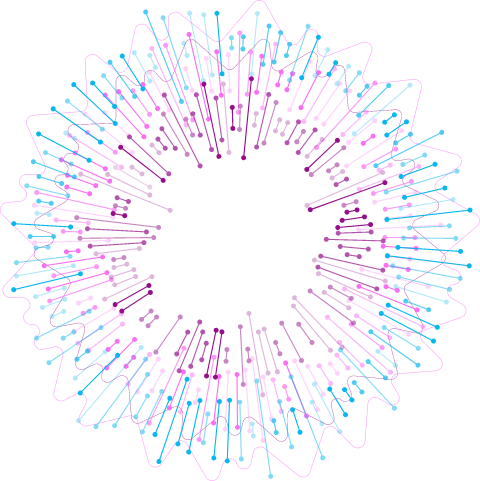
DataLake

What is a DataLake and how does it work?
It’s an innovative approach: ELT (Extract, Load, Transform) compare to the older process of ETL ( extract, transform, and load)
A DataLake is a centralized storage location that contains Big Data in a raw and granular format. It comes from many sources in many formats. A DataLake can store structured, semi-structured or unstructured data, which means that the data can be kept in simpler and more flexible formats for later use. When importing data, the DataLake associates it with identifiers and metadata tags for faster retrieval. Searching a DataLake is also faster because you only need to browse the metadata, not read the entire contents of the files. The term Data Lake implies that the data is stored in bulk and in raw form. In traditional Data Warehouses, clean and processed data is stored.

Read schema vs. write schema
The schema of a Data Warehouse is defined and structured before storage; it is applied while writing the data. That of a Data Lake is not predefined, which allows it to store data in its native format. In other words, in a Data Warehouse, most of the data preparation usually takes place before processing, whereas in a Data Lake it only takes place when the data is used.

Accessibility and flexibility
With a Data Warehouse, you need to allow not only time to define the initial schema, but also significant resources to modify that schema whenever business needs change. Data Lakes are very adaptable to change. As storage capacity requirements increase, it is easier to scale the servers in a Data Lake big data cloud cluster because the raw data is not organized in the cluster.
Why use a Data Lake solution?
The DataLake paradigm has many advantages over the traditional Data Warehouse.
There is a real warehouses data lakes tradeoff. With DataLakes, data is stored in a native way and is therefore easy to extract and process. It is totally possible to use any kind of open-source data pipelines.
LOAMICS-DataLake fully exploits this paradigm to put your single data source just a few clicks away from your users.
A Data Lake operates on a “schema on read” basis, which means that there is no predefined schema into which data must be imported before it is stored. Only when you access data for processing it is analyzed and adapted into a schema if necessary. This feature saves the time needed to define a schema. This is usually exceedingly long and depends on both the volume of data to be processed and the complexity of the schema. A Data Lake allows to store data as it is, in any format. This simplification allows data scientists to access, prepare and analyze data faster and with greater accuracy. For analytics experts, this vast pool of cloud data available in non-traditional formats gives them the ability to access data for various use cases such as consumer sentiment analysis or fraud detection.
Data Lakes are not comparable to Data Warehouses. In fact, they have some notable differences that can be significant advantages for some companies. This is especially true at a time when Big Data, machine learning and their processes are migrating massively from on-premises solutions to the Cloud. Typically, Data Lakes are configured on inexpensive and scalable standard server clusters. This type of configuration allows data to be stored in the Data Lake without having to worry about available storage capacity. If these clusters can be deployed on site, the trend is to place them in the Cloud. This evolution is logical when you consider the advantages provided by hosted data services (redundancy, fault tolerance, security, geo-localized replication, etc.).
LOAMICS-DataLake software benefits
LOAMICS-DataLake is capable of handling large amounts of structured, semi-structured or unstructured data. Once collected, the data is placed in clusters located on the customer’s cloud instances. LOAMICS-DataLake ensures a real virtualization of all the data in the Data Lake. The data is then exposed and made available to all processes, including those in AlgoEngine, which feed analytical applications, reports and dashboards. LOAMICS-DataLake is fully integrated with our other software solutions.
The following benefits can be attributed to it:
- Data automation
- Microsoft Azure Marketplace
- The LOAMICS solution on 4 levels
- European hub Gaia X
- MyDataModels' partner

According to a Forbes study, Data Scientists spend about 80% of their working time preparing the data they will work on.
These skills are monopolized by repetitive and boring work, taking valuable specialists away from the tasks they really excel at. With LOAMICS-DataLake, data preparation is fully automated to an industrial standard.
Data professionals can now focus on their analytical work and on feeding artificial intelligence models.
Discover our other software
LOAMICS-Suite totale is composed of 3 modules including LOAMICS-DataLake.
In addition to this data management application, LOAMICS-Collect is used for data collection and LOAMICS-AlgoEngine for data processing. They are all part of a specialized and optimized pipeline that brings Big Data within the reach of companies of all types and sizes. This suite is a true artificial intelligence gas pedal that enables decision making based on data mining and self-service analysis. Once collected, the data is cleansed and made available in the Data Lake as a single data source. Regardless of volume and format, it is easier to access, analyze, freely cross-reference, and exchange.
Your organization can finally move from being a simple data user to a real business built around and on its data.
Our other software

01 Data collect
Collect and ingest raw data in real time (regardless of the volume, sources or format), to be very simply transformed into homogeneous, efficient and valuable enriched data ready for data visualization and first levels of analysis.
See more
02 AlgoEngine
Connect, process and analyze data in real time to generate insights that meet any end-user need within the organization. Manage a workflow and a library of algorithms that can be continuously enriched. Share knowledge by making available or exchanging the « right » data. Industrializatize the processes of connecting algorithms to the data for all your needs.
See more


